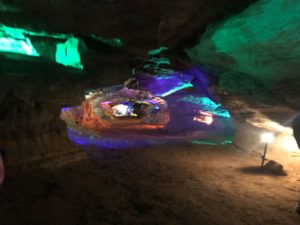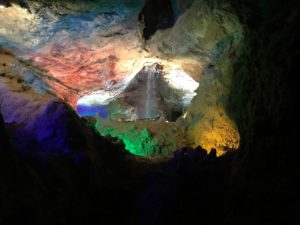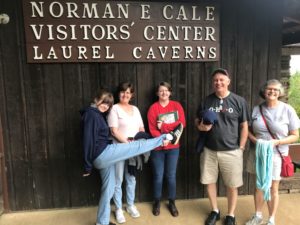 When I’m working at the Fort Necessity Visitors Center, I often ask visitors what else they are seeing in the area. Most of them tell me “Fallingwater” or “Ohiopyle” but a close third is Laurel Caverns. I am not a big cave person, although Tom and I have taken tours in several pretty spectacular caves. So going to Laurel Caverns would not be my first choice of things to do. But my brother’s family wanted to go, and we thought it was a good chance to visit the cavern ourselves.
When I’m working at the Fort Necessity Visitors Center, I often ask visitors what else they are seeing in the area. Most of them tell me “Fallingwater” or “Ohiopyle” but a close third is Laurel Caverns. I am not a big cave person, although Tom and I have taken tours in several pretty spectacular caves. So going to Laurel Caverns would not be my first choice of things to do. But my brother’s family wanted to go, and we thought it was a good chance to visit the cavern ourselves.
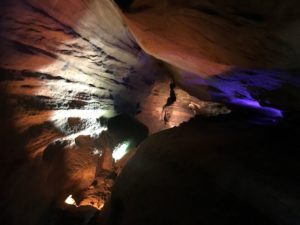 Laurel Caverns is a calcareous sandstone cave system carved through water and seismic activity over millions of years. Because of the seismic activity, there are long fractures in the rock that tilted the cave 13 degrees. The water flowed through the fractures resulting in long, tall passageways through the cave. It is a “show cave,” which means that there is artificial lighting and tours through the cave.
Laurel Caverns is a calcareous sandstone cave system carved through water and seismic activity over millions of years. Because of the seismic activity, there are long fractures in the rock that tilted the cave 13 degrees. The water flowed through the fractures resulting in long, tall passageways through the cave. It is a “show cave,” which means that there is artificial lighting and tours through the cave.
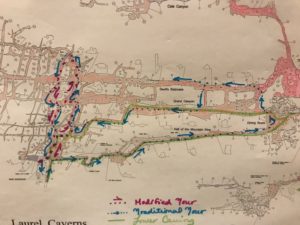
Norman Cale bought the cave in 1962 and developed it into the show cave it is today. Today Laurel Caverns is owned and operated by his grandson David Cale. There are three tours of the cave. The most popular is suitable for everyone who doesn’t have mobility issues and is a one-hour tour through 3/4 mile of the cave. There is also a lower cave tour and an upper cave tour that are longer, more difficult, and dirtier. We opted for one hour tour. Grace and Kat had never been in a cave, so this was a good, easy introduction. This tour starts every 20 minutes throughout the day.
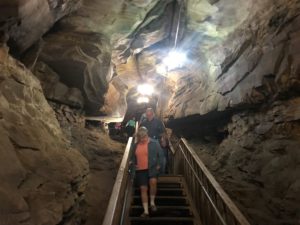
We had a wonderful guide who knows a lot about caves. Unlike other caves we have toured, Laurel Caverns does not have spectacular cave formations. There isn’t enough calcium in the rock for stalactites, stalagmites, soda straws, flowstone, or other formations. But the rooms were fun to see and the lighting made it easy to take a few pictures. Probably the grandest part of the tour is the “Hall of the Mountain King” lit by chandeliers. Laurel Caverns used to be home to a bat population of 25,000. With the onset of White Nose Syndrome, that number is fewer than 50 today.
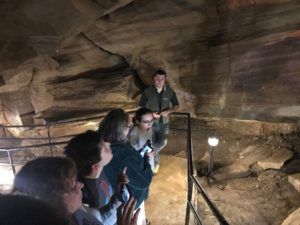
Visiting Laurel Caverns with my brother and his family was fun. We got to explore a popular place in the area and spend time with family. Tom and I always like seeing a new thing.

